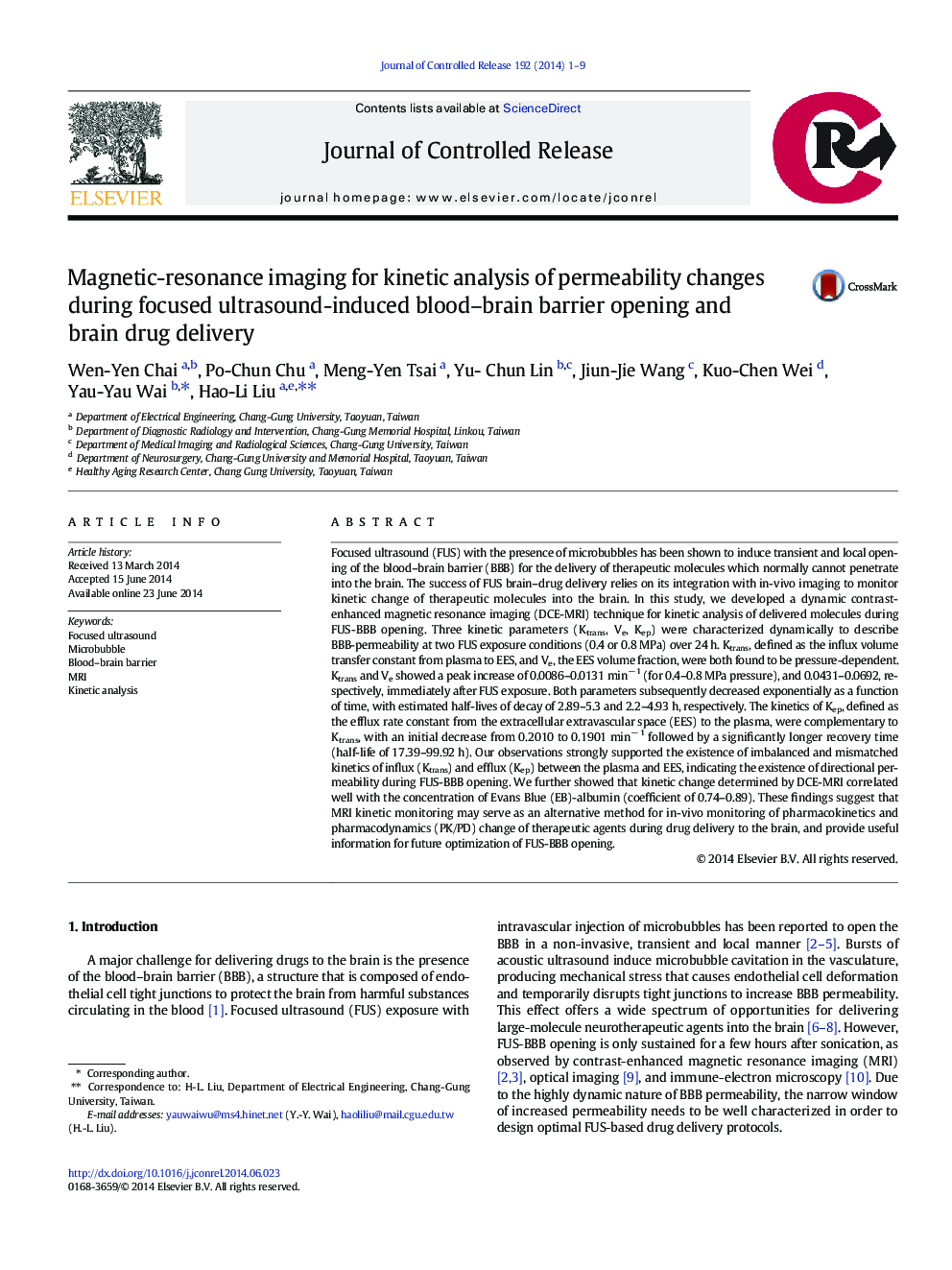| کد مقاله | کد نشریه | سال انتشار | مقاله انگلیسی | نسخه تمام متن |
|---|---|---|---|---|
| 1423931 | 1509057 | 2014 | 9 صفحه PDF | دانلود رایگان |
Focused ultrasound (FUS) with the presence of microbubbles has been shown to induce transient and local opening of the blood–brain barrier (BBB) for the delivery of therapeutic molecules which normally cannot penetrate into the brain. The success of FUS brain–drug delivery relies on its integration with in-vivo imaging to monitor kinetic change of therapeutic molecules into the brain. In this study, we developed a dynamic contrast-enhanced magnetic resonance imaging (DCE-MRI) technique for kinetic analysis of delivered molecules during FUS-BBB opening. Three kinetic parameters (Ktrans, Ve, Kep) were characterized dynamically to describe BBB-permeability at two FUS exposure conditions (0.4 or 0.8 MPa) over 24 h. Ktrans, defined as the influx volume transfer constant from plasma to EES, and Ve, the EES volume fraction, were both found to be pressure-dependent. Ktrans and Ve showed a peak increase of 0.0086–0.0131 min− 1 (for 0.4–0.8 MPa pressure), and 0.0431–0.0692, respectively, immediately after FUS exposure. Both parameters subsequently decreased exponentially as a function of time, with estimated half-lives of decay of 2.89–5.3 and 2.2–4.93 h, respectively. The kinetics of Kep, defined as the efflux rate constant from the extracellular extravascular space (EES) to the plasma, were complementary to Ktrans, with an initial decrease from 0.2010 to 0.1901 min− 1 followed by a significantly longer recovery time (half-life of 17.39–99.92 h). Our observations strongly supported the existence of imbalanced and mismatched kinetics of influx (Ktrans) and efflux (Kep) between the plasma and EES, indicating the existence of directional permeability during FUS-BBB opening. We further showed that kinetic change determined by DCE-MRI correlated well with the concentration of Evans Blue (EB)-albumin (coefficient of 0.74–0.89). These findings suggest that MRI kinetic monitoring may serve as an alternative method for in-vivo monitoring of pharmacokinetics and pharmacodynamics (PK/PD) change of therapeutic agents during drug delivery to the brain, and provide useful information for future optimization of FUS-BBB opening.
Three MRI kinetic parameters (Ktrans, Ve, Kep) were characterized to measure FUS-BBB opened kinetics.Figure optionsDownload high-quality image (301 K)Download as PowerPoint slide
Journal: Journal of Controlled Release - Volume 192, 28 October 2014, Pages 1–9
